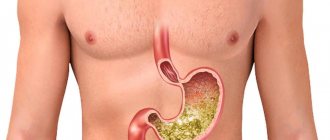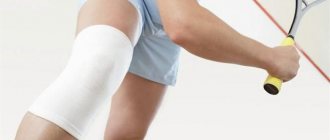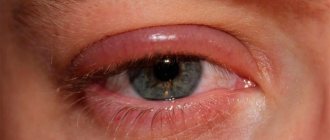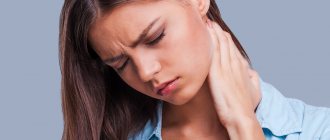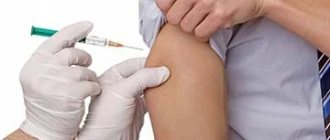Nasal pain and accompanying symptoms
As a rule, pain is not the only unpleasant symptom that worries a child. It may be accompanied by other unpleasant physiological manifestations:
- swelling and nasal congestion;
- discharge from the nasal passages;
- feeling of pressure in the bridge of the nose;
- frontal headache;
- decreased sense of smell;
- nosebleeds;
- increase in body temperature.
Typically, clinical manifestations depend on the nature of the hidden pathological processes. If parents respond to these signals in a timely manner and seek help from a doctor, the child’s treatment will not be so difficult and lengthy.
How do you know if you have sinus inflammation?
With any inflammatory process, be it sinusitis, sinusitis, ethmoiditis or frontal sinusitis, you will notice 3 characteristic symptoms:
- Problems with nasal breathing – it will be difficult to breathe due to obstruction (blocking of the lumen) of the nasal openings due to swelling.
- Characteristic nasal discharge. They can be permanent or temporary. If there is swelling of the nasal mucosa, there may be no discharge.
- Headache and soft tissue swelling. During inflammatory processes, the face swells in the area of the frontal and maxillary sinuses. Sometimes the periosteum becomes inflamed (pereosteitis).
What can cause a pain symptom?
Pain in the nasal cavity or bridge of the nose can vary. Intense or aching pain in the nose can be triggered by:
- trauma of varying severity;
- inflammatory process in the paranasal sinuses;
- acute inflammation of the sebaceous gland (furuncle);
- inflammation of the nasal mucosa, including allergic ones;
- accidental entry of a foreign body into the nasal passage;
- neoplasms affecting nerve endings;
- herpetic or fungal infection.
Thus, the cause of nasal pain is obvious to parents only if the child is injured. In all other situations, consultation with an otolaryngologist is necessary.
What can be included in therapy during treatment?
Don’t know how to treat maxillary sinusitis besides pills? You need herbal preparations. They are good both in the treatment of existing inflammatory processes and as a preventive measure. Their effectiveness is explained by the special composition of active components. As a rule, these are herbal extracts.
Each capsule of this product contains a whole set, including up to 10 or more medicinal plants. It is this composition that helps to quickly eliminate the causes of the disease - any viruses and bacteria in the body, and also helps to cure sinusitis or sinusitis at an early stage.
Just one capsule a day - and your sinuses breathe freely, and your health remains normal even during seasonal colds!
Types of diseases of the nose and paranasal sinuses
Let us denote the main ENT diseases that are localized in the nasal area and diagnosed by an otolaryngologist:
- rhinitis (runny nose): infectious, allergic, hypertrophic, atrophic;
- all forms of sinusitis: sinusitis, frontal sinusitis, ethmoiditis, sphenoiditis;
- adenoiditis - a disease of the nasopharyngeal tonsils;
- purulent-inflammatory diseases of the external nose (furunculosis);
- nasal deformities acquired due to injury;
- compensatory curvature of the nasal septum;
- neoplasms in the nasal cavity (cysts, polyps);
- nosebleeds.
In order to determine the pathology, the doctor uses a set of diagnostic measures that make it possible to identify hidden inflammatory processes, damage, formations, etc. It is important to do this on time - parents should take care of this.
1.General information
Erysipelas, erysipelas - these and similar terms are used mainly in Slavic languages; in medical Latin and most Western European languages, the original ancient Greek name erysipelas was fixed, i.e. "red skin" In the old days there were also synonyms “holy fire”, “Saint Anthony’s fire” or, in Russian, “Antonov’s fire”, although some dictionaries define this term as one of the designations for gangrene.
Erysipelas is an acute skin infection (or recurrent exacerbation of a chronic one), the hallmarks of which are swelling and erythema - a bright red, “fiery” hue of the affected area. In general, erysipelas is one of the most common human infectious diseases; the localization of inflammation can be very different, however, due to the peculiarities of the anatomical structure, the disease often manifests itself on the skin of the face, primarily in the soft tissues of the external nose (vestibule, wings, nasal walls): a high concentration of sebaceous glands, capillaries and nerve endings facilitates the penetration and activation of the pathogen .
A must read! Help with treatment and hospitalization!
Diagnostic methods
Making a diagnosis includes the following instrumental, hardware and laboratory studies, including:
- rhinoscopy - examination of the nasal cavity and nasopharynx using speculums allows the doctor to visually assess the visible part of the nasal passages;
- endoscopy – examination of the nasal cavity using a fiberscope with image transmission to a monitor, which allows you to assess the condition of the mucous membrane and assess the degree of its swelling;
- X-ray diagnostics - radiography and computed tomography will help identify foci of inflammation in the paranasal sinuses and their boundaries;
- bacteriological examination of nasal secretions will help determine the causative agent of inflammation and select the appropriate antibacterial drug;
- Blood tests (general, biochemistry, ESR, etc.) will complement the information about the clinical condition of the small patient.
Based on the results obtained, the doctor will make a diagnosis and prescribe an adequate treatment plan. With timely treatment and strict adherence to its recommendations, the treatment prognosis is usually favorable.
Functions of the nose
At rest, one adult takes approximately 16 inhalations and exhalations per minute through the nose. The breathing rate may increase during intense physical exertion and decrease during night sleep. In one breath, an average of 500 ml of air is inhaled, that is, 12,000 l / day. This air must be purified, heated and humidified. Breathing in untreated or cold air can lead to allergies or colds.
Main functions of the nose:
- Breath. Inhaled air enters primarily through the middle nasal passage, passing through the anterior sections of the nasal concha. Exhaled air flows through the lower nasal passage along the base of the nose.
- Protection. The film on the surface of the mucous membrane can absorb smaller impurities and particles and direct them, along with certain secretions, to the nasopharynx. Also, special proteins are formed on the nasal mucosa that support the protective function and are called “humoral defense”
- Conditioning. The nasal mucosa has a large surface and is equipped with an extensive vascular network and a large number of mucus-forming glands. Thanks to this, the nose warms and humidifies the inhaled air.
—
Methods for treating nasal diseases
The main goal of treatment carried out by a pediatric otolaryngologist is to relieve pain, relieve inflammation and restore patency of the nasal passages. It is also equally important to strengthen the local and general immunity of the body. Thus, treatment of diseases of the nose and its paranasal sinuses can be:
1. medicinal:
- antibacterial therapy;
- vasoconstrictors and antihistamines;
- immunostimulating drugs.
2. local:
- rinsing the nose and paranasal sinuses (cuckoo method);
- intranasal blockades (introduction of medicinal drugs into the side wall of the nose);
- physiotherapy (UHF and UV therapy).
3. surgical:
- puncture (puncture) of the maxillary sinus;
- surgical intervention.
Let us remind you that surgical methods are used in exceptional cases when conservative treatment is impossible or has not brought the desired result. In this regard, we note that a puncture is a radical measure, which is resorted to if the purulent contents of the paranasal sinuses are not eliminated by medication. This will significantly improve the child’s condition and avoid serious complications. The procedure is performed under local anesthesia.
2. Reasons
Erysipelas is a bacterial infection, the causative agent of which is almost always group A beta-hemolytic streptococci. This tendency, however, is not absolute: a similar inflammation can be caused by staphylococcus, especially in cases of a long-term chronically recurrent process, as well as other pathogens. In general, we have to take into account the fact that in recent decades in the clinic of infectious diseases, incl. skin, there is a steady tendency towards an increase in combined invasions (for example, bacterial and fungal), developing according to the mechanism of super- or coinfection.
The main risk factor is microtraumatization of the skin of the nose in combination with weakened local immunity and non-compliance with sanitary and hygienic rules.
The risk increases in the presence of foci of chronic coccal infection in adjacent tissues and organs (otitis, tonsillitis, sinusitis, and many others). One of the widespread causes of erysipelas is the practice of self-squeezing out elements of acne and/or pustular (pustular) rash in unsterile or frankly unsanitary conditions. In some cases, nasal erysipelas is iatrogenic in nature, i.e. the launch of the pathological process is caused by medical procedures or surgical intervention on the ENT organs.
Visit our Otolaryngology (ENT) page
What are the consequences of delaying a visit to the doctor?
Rhinitis is the lesser of “all evils” that may be hidden behind a painful symptom. Delaying the situation can result in the following serious complications:
- Sinusitis is inflammation of the maxillary sinuses. The danger is that the infection can spread to the eyes, brain, ears, which are located in close proximity to the sinuses.
- Frontitis is inflammation of the frontal sinus. This dangerous disease, which occurs against the background of untimely and improper treatment of rhinitis, can even lead to a brain abscess or meningitis.
- Otitis is an inflammation of the outer and middle ear. This disease can be triggered by pathogenic microorganisms that enter the ear from the nasal cavity, through the auditory tube, or when a child sneezes or incompetently blows his nose. This complication occurs quite often (in 80% of cases) in children under 3 years of age.
- Abscess of the nasal septum. An ordinary hematoma formed after a nasal injury can provoke inflammation and suppuration in the area of the nasal septum if an infection occurs. As a result, the cartilage may suffer, even to the point of its complete destruction.
- Blockage of the upper respiratory tract, which can occur due to foreign objects entering the nasal cavity. Small toys or candies in the form of dragees, which a child 1.5-3 years old can accidentally push into the nose, can partially or completely restrict air access.
In order not to lead the situation to the above-mentioned complications, parents need to contact a pediatric otolaryngologist in a timely manner, and not engage in self-diagnosis and self-medication. To conclude the “sore topic,” we remind Kaliningrad residents of the telephone numbers by which they can make a scheduled or urgent appointment with an otolaryngologist for their child:
+7 (4012) 357-773 or +7 (4012) 973-100.
To schedule a consultation, you can also fill out a preliminary application on our website using the red “book online” button.
Prevention is the best remedy for sinus inflammation
Of course, no one can be 100% insured against sinusitis and more severe inflammatory processes. Prevention will help strengthen the immune system and build a protective barrier against viruses, bacteria and infections. To prevent sinusitis without symptoms in an adult or child, you should follow simple rules:
- Avoid hypothermia. Yes, low temperature in itself does not provoke colds and runny nose. But it causes a narrowing of blood vessels and makes the mucous membranes more vulnerable to viruses and infections. In cold, rainy and windy weather, it is important to properly insulate - and you will not face chronic inflammation of the sinuses.
- Rinse your nose more often. This should be done in the fall during epidemics of colds and flu, as well as in the spring during the flowering of trees and shrubs. For rinsing, ordinary saline solutions are suitable, which effectively remove bacteria and allergens.
- Eat properly. The immune system weakens due to lack of nutrients. Include more natural products in your diet - fresh meat and fish, grains and slow carbohydrates, vegetables and fruits. It’s better to avoid processed foods and fast food, or at least reduce their consumption to a minimum.
- Drink vitamins. Nowadays there are many special vitamin complexes and supplements with herbal active ingredients. They work gently but effectively: the result is noticeable within 1-2 weeks. And most importantly, they are completely safe, non-addictive and have no side effects.

